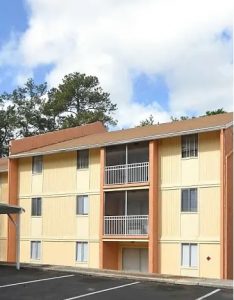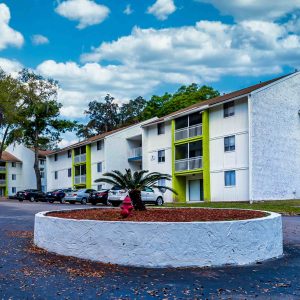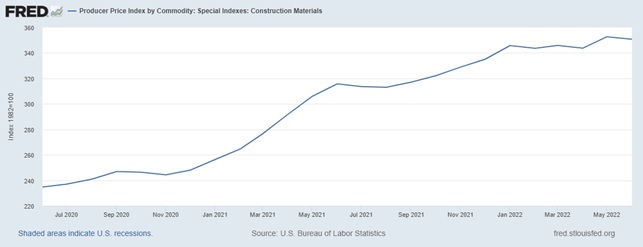When considering purchasing a value-add multifamily apartment property, your first step should always be deciding what needs to be done with the building to increase investor returns. In these cases, the best sponsors adopt a balanced approach aimed at minimizing risk and achieving the strongest possible ROI.
A wide variety of renovations and improvements can be made to any given property, so it can be tough to figure out which will genuinely attract renters and which will be nothing but a money pit.
Our decades-long experience in real estate investments and management, with a specific focus on multifamily properties, has enabled us to develop a simple acquisition process optimized for returns. Using a systematic approach, we assess all potential acquisitions to identify the most profitable options and calculate the overall impact they are likely to have on ROI. For each property, we decide which areas need improvement, how much it will cost, and when the improvements should be made. We then apply this knowledge to our budgeting process to align all decisions with our commitment to providing good value for our residents.
Understanding what upgrades to perform on a building usually means gaining deep insights into current market and area tenant demands. This article will review the most crucial aspects of that process.
Strategy, strategy, strategy
The first part of the value-added process is the acquisition strategy. There are three keys to success at this level: conservative estimates, risk management, and locating an undervalued property. By acquiring the property at the best price, we can improve its chances of success and also offer the investor an important safety margin.
Any given deal is subject to market timing and local nuances, so value-driven acquisitions are more important when looking at overall strategy. Factors beyond a real estate company’s control can disguise bad underwriting in the short term, but strategic errors will always surface over time. Letting your investments be driven by sentiment rather than strategy will have lasting consequences for any investor, especially in extreme market conditions.
Much has been written on the topic of market timing. However, industry veterans who have navigated recessions will tell you to never force a deal and never compromise your underwriting standards to get a deal done. Lowering your standards will inevitably cost you money in the long run.
Balancing maximum returns with risk management
We take a balanced approach to reducing risk and ensuring a reliable return on investment.
When aiming to achieve the highest returns from a multifamily property, there are several considerations to bear in mind. A comprehensive underwriting process, market analysis, in-depth local knowledge, and thriving professional connections are all integral to better returns. Then, a pre-acquisition study enables us to develop, scope costs, and schedule a post-acquisition renovation plan tailored to the property, so we can invest smarter and more reliably.
Identified target demographics, predicted growth trends, and the median income household of residents in the area are just a few factors that guide decision-making regarding the project’s scope and which improvements to make.
In fact, this is why we focus on multifamily properties. Compared to other investment classes, like industrial, retail, or office investments, these properties show excellent risk-adjusted returns with relatively stable long-term cash flows.
Multifamily is also known to have less downside risk during recessions due to the stable tenant base in most major markets. When potential homeowners become renters during economic downturns, the demand for apartments increases, and investors reap the rewards.
Why it’s important to analyze market conditions
During the first property screening and subsequent due diligence, learn everything you can about the market and competitive properties. Value is relative to the market in which it is calculated, and property owners should know what options are available to consumers in that market.
You’ll need to know what the competition is doing, what the marketplace is bearing, and what market segment the property falls into. But, you also need to consider how the property is positioned in the market. Although not every property has to be the best in town or offer the lowest rents, at Nathan Holdings, it is vital for our communities to provide good value for our residents, no matter the rental price or the number of amenities.
When studying the market, the primary goal is to determine its parameters and see what types of upgrades (if any) will work for the property in question. It is essential to recognize that the market dictates strategy, not the other way around. Renovations that return the most significant ROI always correlate with the market in which the property is located. It is crucial to understand that the market dictates strategy, not the other way from it. Renovations that return the most significant Return on Investment usually correlate with the property’s location. For example, installing smart home technology packages only adds value if competitors in the area also offer these features or if research has shown both demand for such upgrades and rent hikes from current tenants willing to pay more for them.
Deciding which renovations to make
Intelligent, informed decisions are the key to successful renovation projects. As mentioned above, it is necessary to perform thorough market research before purchasing a value-add asset because how much you can make on an investment largely depends on the asking price for similar renovations in that area.
We use two important criteria at Nathan Holdings when deciding whether to invest in a specific upgrade:
The first is the upgrade’s ROI. We like to see capital expenditures on unit upgrades produce at least 15% ROI. For example, if an upgrade costs $12,000, we want to see at least a $150 per month increase in rent to justify that investment. A $150 monthly rent increase yields a $1,800 annual increase, which is a 15% return on the original investment.
The other is how the upgrade contributes to enhancing the overall value of the building. When determining the equity multiplier of an investment in CapEx, we calculate the rental increase gain from a renovated unit and multiply by the cap rate projected in the sale of the property. Using the example above, in a 5-cap market, a $150 per month increase, yielding a $1,800 increase in annual rents, would add $36,000 to the property’s value. Compared to the initial cost of the renovation, $12,000, this would be a multiplier of over 3X on the original investment.
Repair vs. renovate
Determining when to repair or renovate involves the assessment of the project. Which strategy will lead to an upgrade in efficiency and which will only lead to an upgrade in appearance? Is cosmetics more important than energy efficiency? Does the existing feature perform well enough to merit its repair? These are the questions that should guide your decision-making process. Understanding what materials in today’s market are worth renovating and which ones are better off repaired is vital.
What’s the difference between repairing and renovating?
A repair typically involves restoring an existing feature to working condition. A renovation, on the other hand, entails removing the old feature and installing something completely new.
Assessing cost-effectiveness through the lens of the holding period is a wise choice. In many cases, renovations are often simpler, and repairs are cheaper. It would be best if you chose which option best suits your investment goals, planned exit date, and risk tolerance.
Information such as when it was built, what it is made of, and how well it still works – can give hints about whether the thing you are looking at needs to be replaced or isn’t going to last much longer. It is also essential to take note if the look of an apartment unit features old-fashioned designs and see if any updates could bring in new tenants and charge higher rates for rent.
Technology advancements have led to many useful and efficient improvements in many facets of construction. Unfortunately, many manufacturers’ “planned obsolescence” model has also led to an increase in disposable products built to last just five or so years. This also needs to be taken into account.
Cosmetic/aesthetic renovation
The aesthetics of a property add to its value through increased appeal to current and prospective residents. These can include painting, landscaping, and updating interior and exterior finishes – changes that might seem trivial but will significantly affect property performance, including vacancy and rental rates. These upgrades also help keep tenants happy, which increases retention.
Red Bay Apartments – Before and After:


Structural & major renovations
In general, renovations involving structural or major changes require the most involvement. These types of renovations can include replacing a roof, repairing foundations, adjusting mechanical systems, switching to high-efficiency toilets, improving kitchens, replacing floor coverings, and providing common area amenities. As this type of renovation is the most intensive, it can often result in the highest return on investment. Upgrades to in-room amenities are generally recognized as yielding the greatest ROI.
For example, we recently completed water, energy, and waste management improvements in one of our properties. This included installing new high-efficiency toilets in 500 bathrooms across all 288 units, achieving a reduction of over 30% in water consumption.
Operational upgrades
An underperforming property can also be improved by upgrading its management. Property management is the key to unlocking value through, for example, raising the rent to market levels, collecting back rents, and adding new revenue sources such as valet trash services to improve waste management and curb appeal. These operational issues should be addressed case-by-case to ensure the property runs smoothly and tenants remain satisfied.
Increasing cash flow
A tiered, gradual strategy for upgrading multifamily assets gives property owners a way to both retain current residents and earn increased revenue through renovating units by group (building, floor, unit type) and upping the rent.
The impulse to act quickly and aggressively by upgrading everything at once is frequently thoughtless in more ways than one. It’s easy to forget that a multifamily property is more than just an asset classification. It’s a home to dozens or hundreds of people. You need to strike a delicate balance between preserving ongoing cash flow from existing residents and encouraging turnover for enhanced asset improvements and value appreciation when adding value to a property.
Value-adding renovations and improvements that appeal to current tenants, attract prospective tenants, and help keep a property’s occupancy rates healthy will be significant for maintaining profitability over time. Doing too much too quickly is a risky strategy. Going past what the market can handle may cause property owners to hold assets longer than planned, compensating for low cash flow stemming from periods of high vacancy rates caused by them.
Instead, experienced owners will contact on-site management, discuss planned upgrades, and see if the required rent increases are compatible with local market conditions, easing the potential risk.
Improvements may fluctuate in cost
The cost of improvements varies with economic cycles. The past year has seen material and labor shortages as well as a surge in overall construction costs, making it much more challenging to plan projects. Many renovators have thought to have paid around 15-20% more than they would have the previous year.
Macro-economic changes like inflation, supply chain disruptions, and interest rates will cause costs to fluctuate from those anticipated initially during initial underwriting. Financial discipline is necessary. These conditions require all upgrades to be planned carefully, with solid communication between owners, contractors, and suppliers. Remember that a schedule may still be disrupted, despite companies’ promises. We have encountered various economic swings over time at Nathan Holdings and are ready to avoid downswings by anticipating possible challenges.
For example:
Construction Materials Producer Price Index by Commodity is up ~35% in the last 24 months.

Check-in on progress
In renovation projects, there is often a focus on speed rather than costs and the appropriate processes. It is always vital to check in to ensure things are still going according to plan, which means keeping an eye on your budget.
Continued market research and communication with the on-site management team will inform you about the success of your recently renovated units and how to price and market them. It’s essential to stay informed so you can adjust your strategy as needed.
For example, if demand is higher than expected, you may want to increase rent. If construction costs are higher than expected, it may be time to revisit budgets. Or, if there’s an opportunity to rent or sell at a premium to recoup costs quicker, that’s something you should consider. If everything is going according to plan, continue monitoring until all projects are complete.
Conclusion
When determining the costs of renovating a potential investment, the most beneficial method is thoroughly analyzing the asset’s current state and understanding the demographics and competition in the local submarket.
A pre-acquisition study enables us to develop, price, and schedule a renovation plan deal tailored to post-acquisition, so we can invest smarter and more reliably. This is our practice and tradition at Nathan Holdings.
